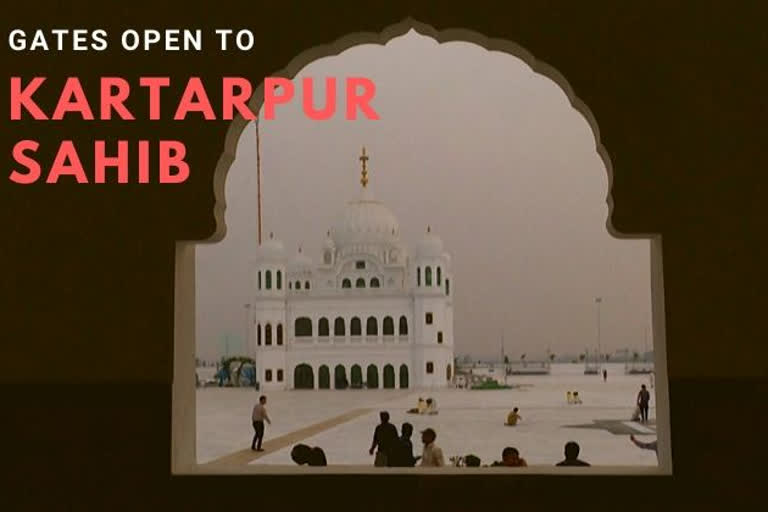Punjab: The Kartarpur Corridor between India and Pakistan, which connects Dera Baba Nanak shrine in India's Punjab with Darbar Sahib or Kartarpur Sahib in Narowal district of Pakistan's Punjab, will be thrown open on Saturday by Prime Minister Narendra Modi.
The inaugural day also coincides with the 550th birth anniversary of Guru Nanak Dev, the founder of Sikhism.
Prime Minister Modi will be flagging off the first batch of more than 550 pilgrims who will then travel to the last resting place of Guru Nanak.
Modi will be inaugurating the passenger terminal building, also known as Integrated Check Post, where pilgrims will get clearance to travel through the newly-built 4.5 km-long Corridor.
Among the first group of 550 pilgrims who will travel to Kartarpur are former Prime Minister Manmohan Singh, Punjab Chief Minister Amarinder Singh, actor-politician Sunny Deol, and Union Ministers Hardeep Puri and Harsimrat Kaur Badal.
Till last year, Indian Sikh pilgrims had to cover an arduous 125-km long journey via Lahore to pay a visit to the Kartarpur gurdwara. Once opened, Sikh pilgrims will be allowed to visit the site without any visa. But, the pilgrims must return the same day.
The issue of providing Indian's access to the gurudwara has been long-pending between the two neighbour countries.
Long-overdue
The proposal for affording Indian pilgrims with open access to the Gurudwara Sahib was first mooted in 1999 by the then Indian Prime Minister Atal Bihari Vajpayee of India and Pakistan's Prime Minister Nawaz Sharif.
In the year 2001, Sikh Sangat in large numbers gathered at the 'Darshan Asthan' and prayed for opening the Kartarpur Corridor affording Indian pilgrims easy and open access to the Gurudwara Sahib.
The first such mass prayer was held on the occasion of Baisakhi in April 2001. But, it was only in 2019 that the mass prayers of the entire Sikh Sangat bore fruit and the proposal to open the Kartarpur Corridor was mooted on a more sound footing by the Pakistan PM Imran Khan when the former Cricketer, and now an MLA of the Punjab Legislative Assembly, visited Pakistan to attend Imran Khan’s swearing-in ceremony on the latter’s invitation.
As soon as this news became public, it gladened the entire Sikh community the world over.
Following this, the foundation stone of the Kartarpur Corridor was laid by the respective governments of both India and Pakistan.
Soon after the idea of opening the corridor was mooted, the issue became subject of intense politicking in both the countries and many political hurdles came its way from time to time.
But finally, on the occasion of the 550th Birth Centenary of Guru Nanak Dev, the Kartarpur Corridor, which would enable the Sikh Sangat from India and abroad to visit and pay their obeisance at this sacred place, is now going to be opened.
History behind the shrine
The gurudwara, originally known as Gurudwara Darbar Sahib, is among the holiest shrines for Sikhs. It is believed to be the final resting place of Guru Nanak Dev, the founder of the Sikh religion.
Located on the banks of the Ravi river, the gurdwara was built to commemorate the site where Guru Nanak settled after his missionary work.
Gurudwara Darbar Sahib was the place where Guru Nanak is believed to have lived for 18 years until his death in 1539.
